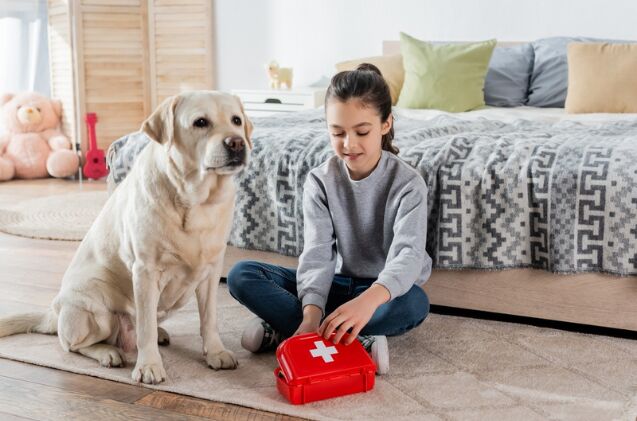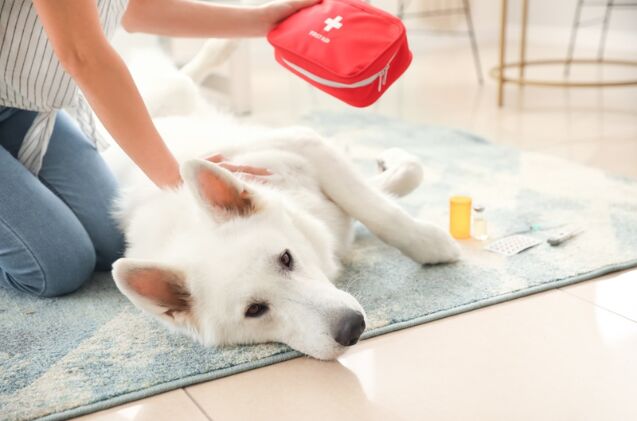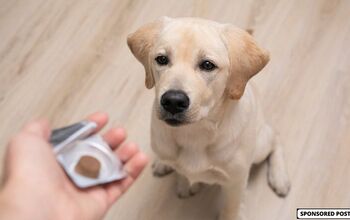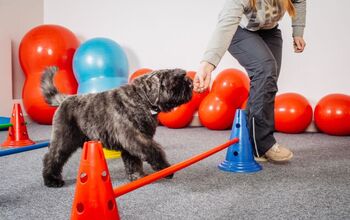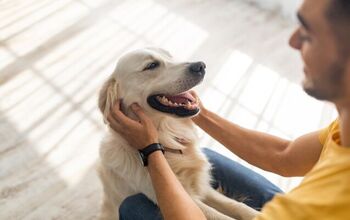What Should I Include in a Pet First Aid Kit?

As loving pet parents, we do everything possible to keep our furry companions safe and healthy. However, life is unpredictable, and accidents happen, so we must be prepared for unexpected emergencies. This includes ensuring we have a fully stocked, pet-friendly first aid kit available.
In this article, we’ll discuss the essential items you should have on hand to care for your pet in those unforeseen moments. From basic cuts and scrapes to more severe injuries, you’ll be prepared to act as your pet’s first line of defense when it matters most.
Can You Use a Human First Aid Kit on Dogs and Cats?
Yes, sort of. Most of the items included in a human first aid kit can be used to treat your pet in the case of an emergency. You may be wondering – if they can use the same supplies, why do I need a first aid kit specifically for pets?
Some items you won’t find in a human first aid kit may be necessary depending on your pet’s injury or ailment. These could address a problem that only a dog or cat could experience, or they may involve finding alternatives for human products that are unsafe for our pets, like human medications.
What Human First Aid Products Can Be Used on Dogs and Cats?
Most standard items in your first aid kit can be used on dogs and cats. For example, bandages, gauze pads, ice packs, and medical tape are all suitable for pets. They are the exact same items often included in both human and pet first aid kits.
Tools like scissors, latex gloves, and tweezers will also be helpful when performing first aid on a pet.
This means that if you currently have a standard human first aid kit at home, you are already well on your way to being prepared to take care of your pet in an emergency. To update your human first aid kit and make it suitable for pets, you will just need to add a few important items:
8 Things to Include in Your Pet First Aid Kit
If you’re ready to update your first aid kit to make it “pet-friendly,” we have you covered. Here is a list of items you may need to take care of your dog or cat in their time of need.
Styptic Powder
When we break a nail, it can be painful. But this is nothing compared to the risk a broken nail could pose for your pet. Inside your pet’s nail is a bundle of nerves and blood vessels known as the quick. If this is damaged when your pet breaks a nail, it is incredibly painful and can bleed considerably.
The fastest and most effective way to stop bleeding from a broken nail is to use Styptic Powder. This clotting agent can stop minor bleeding in 30 seconds while providing pain relief due to its topical anesthetic properties. In short, it will help you to stop the bleeding and dull the pain quickly.
Nail Clippers
A solid pair of pet nail clippers is another essential item when dealing with a broken nail. This will allow you to easily remove any broken pieces so you can address the problem. This should be included even if you usually care for your pet’s nails using a Dremel or nail scratchboard. In an emergency, your pet doesn’t have the time or, likely, the right mindset to slowly file down their nails with these other alternatives. Instead, you want to address the problem as quickly as possible.
Avoid guillotine-style nail clippers, which would require navigating the tool around the broken nail. A pair of standard plier-style nail clippers will be easier to use for this purpose.
Fur Clippers
This is an item that is included in some pet first aid kits and not others, but it can be beneficial if your pet has a longer coat, making it challenging to get to their skin to treat a cut or scrape. A small rechargeable or battery-operated fur clipper will allow you to trim back the fur, exposing the injury.
However, this isn’t an item you want to use with your dog for the first time in an emergency. Instead, begin to expose them to the sound and the feel of the clippers in advance. This doesn’t mean you must actively cut their fur during the conditioning stage. Simply turning on the clippers around them so they hear it or placing the handle against them for a second to feel the vibrations can help normalize these sensations.
Failure to condition a tool like this can add unnecessary anxiety to an already difficult and stressful situation.
Tick Key or Other Tick Removal Tool
The number of ticks across many places in Canada and the US has been on the rise. Not only are these little pests irritating (who wants to be bit by any bug or parasite), but they are also known carriers of several diseases and illnesses, including:
- Lyme Disease
- Rocky Mountain Spotted Fever
- Bartonellosis
- Babesiosis
- Anaplasmosis
- Ehrlichiosis
- Hepatozoonosis
- Cytauxzoonois
Using a tick-preventative is the best way to reduce your pet’s risk of contracting a tick-transmitted disease. However, if you discover a tick, you must act quickly. The longer the tick stays attached, the greater the risk of trouble.
While you can remove a tick with tweezers, but tick keys and other tick removal tools make the process even easier. The best part? They are low-cost and small for storage – meaning there is no reason not to toss one of these valuable tools into your first aid kit just in case.
Vet Wrap
This special self-adhering bandage works by sticking to itself but not your pet’s fur. It is often used on top of gauze pads or gauze wrap to hold the bandage in place and protect it from dirt, debris, and damage over time. It can also be used for other first aid procedures to hold splints in place, support sprains, and provide pressure or compression.
Nylon Leash (& Harness)
When faced with a stressful situation, it’s not uncommon for your dog or cat to be tempted to run for cover. It’s their natural response! Unfortunately, running away from you could worsen the situation by delaying treatment or even causing further injury during their escape attempt.
For most large dog breeds, a nylon slip lead is an easy way to hold your dog with minimal gear. If you have a cat or a smaller dog, you may also need to include a harness with your first aid gear.
Select a harness that is as close as possible to the gear that they are used to wearing. This will allow them to feel as comfortable as possible in an uncomfortable situation. For example, if you have a cat that always wears a cloth vest-style harness, putting them suddenly in a nylon harness could bother them.
Muzzle
Another response that many pets may have is to become reactive, trying to protect themselves from further pain and discomfort. As part of this, they may lash out and snap or bite. This doesn’t mean your pet is mean or aggressive – even the nicest pets may act uncharacteristically in this scenario.
Like the fur clippers, this is something you should work on conditioning your pet to in advance. Muzzle conditioning is a process that involves lots of treats and praise while slowly introducing the muzzle and working up the length of time that they are wearing it. This will create a positive association with the muzzle, so it doesn’t stress them to wear it. In some situations, they may even find their muzzle to be a source of comfort.
Any muzzle can be used in an emergency; however, storing a larger basket or vinyl muzzle may be difficult due to space constraints. A nylon muzzle is a great emergency solution for short-term use.
Collapsible Water Dish
Whether you’re trying to encourage your pet to drink to help rinse down a medication or to cool them off during a heat-related emergency, being able to give your pet cool, fresh water is essential. But you don’t want to be fumbling, searching for a bowl during all the stress and confusion. Instead, consider keeping a basic silicone collapsible dish tucked in with your first aid gear where it’s easy to grab.
Emergency Contact Information
One of the biggest struggles many pet parents face during an emergency is the stress of finding the most basic information. If your pet needs veterinary care immediately, you don’t want to waste time searching for contact info.
Create a contact information sheet including the following:
- Your veterinarian’s contact information
- Phone numbers and addresses for all local emergency vet hospitals
- The ASPCA Animal Poison Control Center phone number (1-888-426-4435)
Additionally, print any documentation regarding your pet’s current medication or health records that may be needed when seeing an emergency veterinarian unfamiliar with your pet’s medical history. This could save time assessing or collecting this information, arming them with everything they need to recommend the best possible treatment options.
If you have access to a Pet First Aid Guide that breaks down or instructs you on performing critical first aid procedures, like wound care and CPR, keeping that with your fully stocked pet first aid kit would also make sense. Even the most confident pet first aid instructors may draw a blank in the moment when their beloved pet’s health and safety are in danger! It’s always better to be safe than sorry.
Bonus: Your Pet’s Carrier
Do you have a smaller pet that requires a carrier for a trip to the vet? If you are faced with an emergency serious enough that vet care is necessary, you don’t want to be searching the house to find the carrier. Designate a specific area in your home to keep your carrier when not in use. Choose a location that is easy to access, allowing you to grab the carrier and go with as little added effort as possible. After all, seconds may be valuable in getting your pet the care they need!
Final Thoughts: Creating a Pet First Aid Kit
The best thing you can do for your pet in the event of an emergency is to be prepared – this includes ensuring that you have a fully stocked and pet-friendly first aid kit on hand. While you can purchase a designated pet first aid kit, these are often very similar to human first aid kits with a few added items. Updating your existing kit doesn’t have to be complicated!
The items can be added directly if you have space in your existing kit. Otherwise, storing the additional items in a water-tight container that can be kept directly with your main kit for easy access is recommended.
Consider adding items necessary for your pet’s care, like pet-safe medications, styptic powder, veterinary bandages, and contact information for your veterinarian and nearby emergency vet hospitals. Having these supplies organized and easy to find could make all the difference when caring for your pet’s injury or illness, allowing you to ensure they receive the treatment they require as quickly as possible.
Join the PetGuide community. Get the latest pet news and product recommendations by subscribing to our newsletter here.

Britt Kascjak is a proud pet mom, sharing her heart (and her home) with her “pack” which includes her husband John, their 2 dogs – Lucifer and Willow – and their 2 cats – Pippen and Jinx. She has been active in the animal rescue community for over 15 years, volunteering, fostering and advocating for organizations across Canada and the US. In her free time, she enjoys traveling around the country camping, hiking, and canoeing with her pets.
More by Britt



